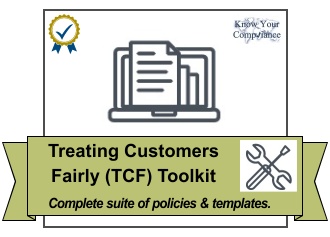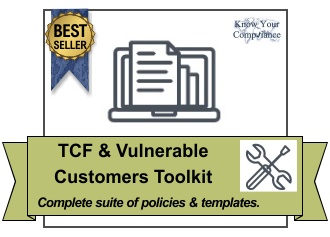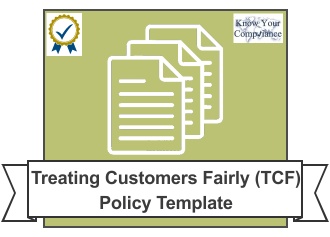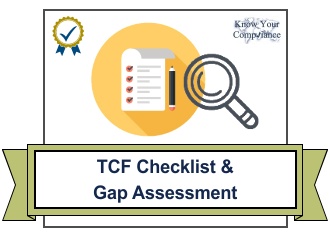TCF Guidance Manual
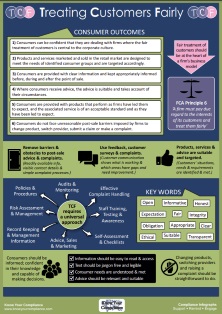
Our unique TCF Guidance Manual helps firms regulated by the FCA to meet and exceed the TCF outcomes and principles. This comprehensive and original 97 page handbook has been developed by TCF experts who have provided firms with information, guidance, tools and templates for embedding the TCF ethos into every business processes.
Treating Customers Fairly (TCF) focuses on ensure fairness, clarity, transparency and due regard for consumers purchasing products/services in the financial, insurance and credit markets. There are 6 desired outcomes to ensure that consumer interests are both respected and regarded and organisations regulated by the FCA are expected to embed TCF into the fabric of their business processes, services and products.
The FCA expect businesses to monitor, audit and evidence the treating customers fairly ethos and with the Know Your Compliance TCF Guidance Manual, we cover all areas of TCF and show you how you can relate them all to TCF. As with all of our products, the manual is provided in a Word Document version and is fully editable, so you can amend the document to suit your needs. However, unlike our Compliance Manual, this aim of this TCF Guidance Manual is to provide you with steps, information and guidance for complying with and embedding TCF into your business.
View TCF Manual Table of Contents
The objectives of this manual are to help your firm to understand the what, why, who and how of TCF and to examine each of your business processes and areas to ensure that TCF is at the forefront of each activity. Through the use of expertly designed checklists, assessments, documents and audits, you will be able to see how TCF can fit seamlessly into your organisation and how many of the TCF principles can actually complement your existing business objectives.
TCF has become a grey area for many organisations as despite it being highly publicised as a major priority for the FCA, the expectations are provided in a guideline format without specific rules or requirements for firms to follow. This has left the area of TCF open to interpretation, which means many firms – many approaches. With everyone addressing TCF in their own way, it is difficult to know who, if anyone, has it right. That is where KYC and this manual come in and whilst we know that TCF is not a ‘one size fits all’ theory, it can be developed, assessed and implemented according to a serious of standardised procedures.
 Despite far reaching and widely accessible information being available about TCF and it’s 6 outcomes, there are still a surprising number of firms, coming under the FCA’s regulatory umbrella, who are not 100% sure of how to relate the outcomes to their own business objectives and procedures. The generic description of ‘treating a customer fairly’, is a far cry from the FCA’s interpretation of its own 6 Outcomes.
Despite far reaching and widely accessible information being available about TCF and it’s 6 outcomes, there are still a surprising number of firms, coming under the FCA’s regulatory umbrella, who are not 100% sure of how to relate the outcomes to their own business objectives and procedures. The generic description of ‘treating a customer fairly’, is a far cry from the FCA’s interpretation of its own 6 Outcomes.
The main sticking point seems to be that the TCF policy and each outcome places the emphasis on the customer and how they are to be treated and protected, which is of course the FCA’s main objective. However, to ensure that this objective is met, it is essential to provide the firms integrating TCF into their framework, with the tools and information to achieve this, whilst still ensuring that they can remain active and competitive within the market.
The FCA have not actually set any specific standards on how the TCF ethos and outcomes should be implemented into a business or how they can be assessed, which makes standardisation and conformity extremely difficult. Which is why our TCF Guidance Manual is so useful to regulated firms. Our manual provides you with hints, tips, information, tools and real-world guidance to ensure that you are meeting the TCF outcomes and standards as well the the FCA requirements in this area.
Buy Now
Our TCF Guidance Manual comes bundled with some of our bestselling treating customers fairly templates. Our TCF Template Toolkit helps firms to meet and exceed the FCA’s expectations with regards to responsbilities to consumers.

